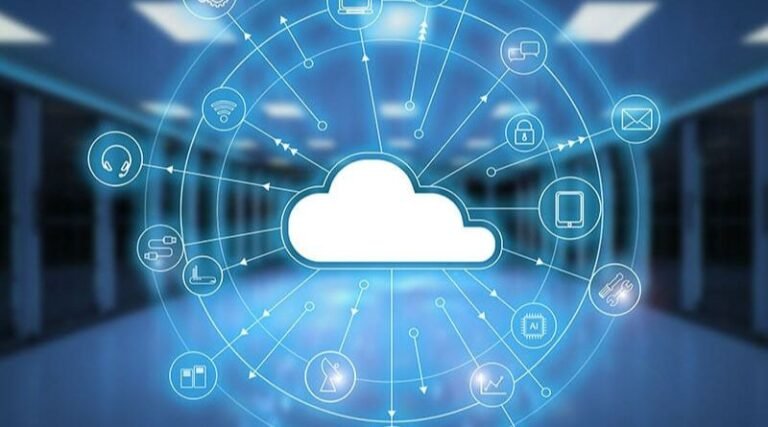Edge Computing vs. Cloud Computing: What’s the Difference?
In today’s fast-evolving technological landscape, businesses and developers are increasingly relying on computing models that enhance the processing and storage of data. Two of the most discussed technologies in this space are edge computing and cloud computing. While both are crucial in enabling modern applications, they serve different purposes and offer distinct advantages. Let’s explore the core differences between edge computing and cloud computing, and how they impact businesses and users alike.
What is Cloud Computing?
Cloud computing refers to the delivery of computing services—such as storage, processing power, and networking—over the internet. In cloud computing, data and applications are stored in centralized data centers that are often located far away from the end-users or devices. This allows companies to access and manage vast amounts of data from virtually anywhere with an internet connection.
Cloud computing operates on three main models:
- Infrastructure as a Service (IaaS): Provides virtualized computing resources, such as servers and storage.
- Platform as a Service (PaaS): Offers a platform for developers to build, test, and deploy applications without worrying about the underlying infrastructure.
- Software as a Service (SaaS): Delivers software applications over the internet, eliminating the need for local installations.
Some popular cloud providers include Amazon Web Services (AWS), Microsoft Azure, and Google Cloud. The cloud’s scalability and flexibility make it ideal for businesses looking to expand rapidly or manage fluctuating workloads.
What is Edge Computing?
Edge computing, on the other hand, is a distributed computing model that brings data processing closer to the source—be it a device, sensor, or local server. Rather than relying on a centralized data center, edge computing handles data at the “edge” of the network, reducing the need to send large amounts of data back and forth to the cloud.
Edge computing is particularly useful in applications that require real-time data processing or low-latency interactions. Industries like manufacturing, healthcare, and autonomous vehicles are adopting edge computing to reduce response times and enhance the efficiency of their operations.
Key Differences Between Edge and Cloud Computing
- Data Processing Location:
- In cloud computing, data is processed in centralized data centers, often far from the devices or users generating the data.
- In edge computing, data is processed locally, closer to where it is generated, allowing for faster processing times and reduced latency.
- Latency:
- Cloud computing typically involves some delay since data must travel to and from the data center. This may not be suitable for real-time applications where immediate responses are required.
- Edge computing offers lower latency because data is processed at the source, making it ideal for applications like autonomous driving, IoT devices, and video analytics, where even milliseconds of delay matter.
- Bandwidth and Data Transfer:
- Cloud computing requires continuous data transfer between devices and the cloud, which can consume significant bandwidth and lead to high costs, especially for data-heavy applications.
- Edge computing reduces the need for large data transfers by processing data locally, minimizing bandwidth usage and reducing network congestion.
- Security and Privacy:
- In cloud computing, data is often stored in remote locations, increasing the risk of breaches during transmission. However, cloud providers typically offer robust security protocols to protect data.
- Edge computing enhances data privacy because sensitive information can be processed locally, reducing the need to transmit it across networks. However, local devices may be more vulnerable to physical tampering or localized cyberattacks.
- Scalability:
- Cloud computing excels in scalability, allowing businesses to easily expand their computing resources as demand grows. With the cloud, you can adjust capacity on-demand without worrying about local infrastructure.
- Edge computing is less scalable in a centralized sense because it requires local infrastructure at multiple points. However, it is scalable across a distributed network, which can be beneficial for companies with widespread operations.
- Use Cases:
- Cloud computing is ideal for applications that require large-scale data storage, big data analytics, or extensive computational power. It is widely used in sectors like finance, e-commerce, and content streaming.
- Edge computing is best suited for real-time applications such as autonomous vehicles, smart cities, industrial automation, and IoT devices, where rapid data processing and response times are critical.
Choosing Between Edge and Cloud Computing
The choice between edge and cloud computing largely depends on the specific needs of a business or application. For companies that require real-time processing, low latency, and localized data handling, edge computing is the better choice. On the other hand, businesses looking for scalable solutions to store and process vast amounts of data with flexibility will benefit more from cloud computing.
In many cases, businesses are finding that a hybrid model combining both cloud and edge computing offers the best of both worlds. Edge computing can handle time-sensitive tasks locally, while cloud computing can be used for more intensive data processing and long-term storage. This approach allows businesses to strike the perfect balance between performance, cost, and scalability.
Conclusion
Both edge and cloud computing play vital roles in modern technology ecosystems, but they are designed to solve different problems. Cloud computing provides centralized, scalable solutions that are essential for data-intensive applications, while edge computing offers localized, real-time processing for latency-sensitive use cases. Understanding the differences between these two technologies can help businesses make informed decisions about which model is best suited for their needs, or how to effectively integrate both to achieve optimal performance.

